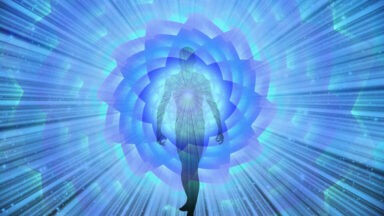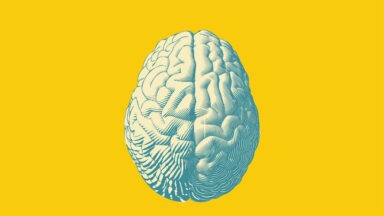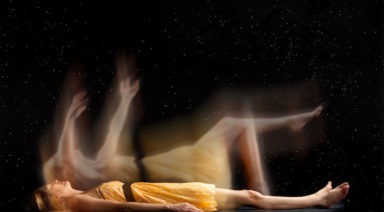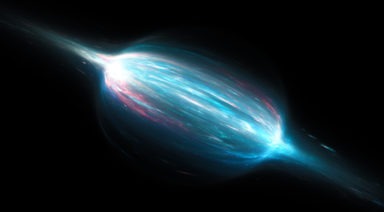Oldest Evidence of Ayahuasca Use Found in Ancient Shaman’s Stash

Bolivian archeologists found what appears to be the world’s oldest evidence for the use of the psychedelic brew ayahuasca, in a shaman’s stash alongside a slew of other psychoactive substances. The ancient drugs were found in a 1,000-year-old pouch made of fox snouts in a cave in Cueva del Chileno in the highlands of the Andes.
The shaman’s pouch was originally thought to be a leather shoe when it was discovered back in 2010, but upon further inspection proved to contain a bundle with a headband, llama bone utensils, and various devices meant for crushing and inhaling psychoactive powders – a toolkit of primitive paraphernalia.
1000-Year Old Ancient Drugs
In addition, the shaman’s pouch contained a pharmacopeia of psychotropic herbs and plants containing DMT, such as chacruna, harmine (an ayahuasca compound), bufotenine (a DMT analogue found in toad venom), cocaine and a cocaine metabolite, and possibly psilocyn a psychoactive component of magic mushrooms.
According to Jose Capriles, an archeologist at Penn State University and one of the authors on the discovery’s paper, the array of psychotropic herbs found in the shaman’s pouch would have had to be sourced from very disparate areas of the Amazon, meaning this DMT shaman would have travelled many miles or had access to extensive trade routes to acquire his stash.

Shaman’s pouch made of fox snouts stitched together courtesy natgeo.com
The history of ayahuasca in the Amazon is believed to have been passed down over centuries –about 5,000 years— according to indigenous cultures, despite debate by western archeologists studying its history. But when it comes to western studies of ayahuasca, western academia is often stumped by the many inexplicable facets of the brew.
Such as how, out of 40 thousand plant species in the Amazon, did indigenous people know to combine specific vines and plants containing DMT and a substance that negates a very specific enzyme in the gut, to produce the most potent hallucinogen known to man. Not to mention the vast troves of medicinal combinations of those plants, which indigenous shamans and doctors say were revealed to them under the influence of ayahuasca.
In Jeremy Narby’s 1998 book The Cosmic Serpent, documenting his time spent among the indigenous Ashaninka tribe of Brazil, he concludes that the discovery of the DNA double helix strand was influenced by visions seen under the influence of ayahuasca. Narby says he believes the brew allows shamans to shrink their consciousness to the molecular level to “gain access to DNA-related information, which they call animate essences or spirits.”
Now with this recent discovery, it has become apparent that the use of these psychedelic substances was widespread and likely considered extremely valuable as tools of knowledge and spiritual sacrament. And as these substances slowly become more popular tools of healing and medicine in the western world, it seems we may be on the verge of discovering what indigenous cultures have held sacred for so many years.
For more on the shamanic rituals involved with ayahuasca and other psychedelics check out our series Psychedelica:
Are Supernatural Entities Encountered on DMT Healing People?

Could supernatural entities encountered during a psychedelic trip be responsible for the dramatic psychological healing that many reports? New research seeks to find out.
DMT or N, N-Dimethyltryptamine is widely considered the Earth’s most powerful hallucinogen. It is the latest psychedelic to be clinically studied for its potential to treat mental health issues like major depression and PTSD.
One frequently occurring phenomenon of the DMT trip researchers are particularly interested in is the appearance of entities whom experiencers often credit with the healing they receive.
Jay Waxenberg is the director of the DMTx program at the Center for Medicinal Mindfulness. Based in Boulder, CO, it was one of the first centers to offer legal psychedelic therapy in the U.S.
“The entities are really this unique aspect of DMT and they play different roles for different people in that space. What’s very common is, one, you’re going to encounter one of these things, and two, that you’re going to feel like they’re giving you some piece of information to take back to the regular consensus reality. Also, that they are benevolent — lots of love and kindness, these are very common elements for the entities — and we have linguistic models to kind of relate to those spaces, whether they’re elves or imps or fairies, they could be angels, bodhisattvas, aliens, interdimensional beings — these are kind of like the things that people will come back and say ‘[T]hat’s kind of what that felt like, that’s kind of what that thing is.’”
The groundwork for current research on the topic was laid by Dr. Rick Strassman- a psychiatrist and pioneering psychedelic researcher who first described these entities in his book ”DMT: the Spirit Molecule.”
“The beings were beneficent, they did healing, they gave advice, some predicted or showed volunteers the future, some were examining the volunteers. But one of the hallmarks of the interaction was the strength of those beings,” Strassman said.
A recent study surveyed 2,500 individuals who encountered entities after taking DMT. The researchers found that “[T]he experiences were rated as among the most meaningful, spiritual, and psychologically insightful lifetime experiences, with persisting positive changes in life satisfaction, purpose and meaning attributed to the experiences.”




































